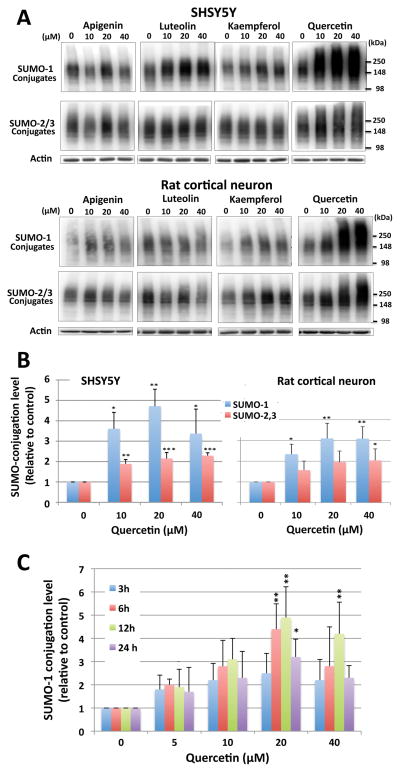Figure 1. Quercetin treatment increases SUMO conjugation (both SUMO-1 and SUMO-2,3) in SHSY5Y cells and E18 rat cortical neurons.
(A) Representative immunoblots of SUMO-1 and SUMO-2,3 conjugates in SHSY5Y cells (upper panels) and rat cortical neurons (lower panels) that were treated with the flavonoids indicated at various concentrations (0, 10, 20, 40 μM) for 16 hr. (B) Quantitative analyses of the SUMO-conjugates in SHSY5Y and cortical neurons treated with quercetin at 10, 20 and 40 μM for 16 hr. The region corresponding to molecular weights > 100 kDa in each lane was cropped and the total intensity was analyzed. The densities were normalized to the corresponding actin levels and expressed as the ratio to control (no quercetin: DMSO alone). Data represent the mean ± standard deviation of at least three independent experiments. **p<0.01, *p<0.05 compared to the DMSO alone control via a one way ANOVA, followed by Dunnett’s post-hoc test. (C) Effects of dose and incubation time of quercetin on SUMO-1 conjugation levels in SHSY5Y cells. Cells were treated with various concentrations of quercetin (0, 5, 10, 20, 40 μM) for 3, 6, 12 and 24 hr and SUMO-1 conjugation levels were analyzed as per the aforesaid. Data represent the mean ± standard deviation of at least three independent experiments. **p<0.01, *p<0.05 compared to the DMSO alone control via a one way ANOVA, followed by Dunnett’s post-hoc test.

